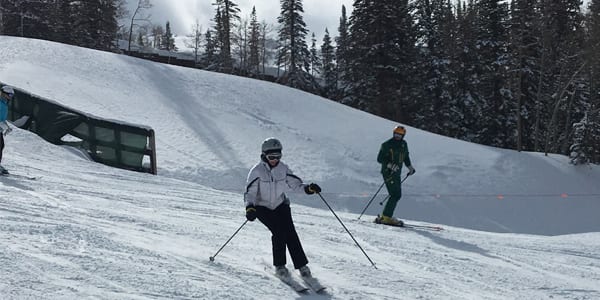 When you ski the conditions are often fleeting. It may start off sunny and end up snowy; the snow conditions can be powder at the top and slush at the bottom; the light goes from bright to flat, and the wind can pick up at any time. I recently went skiing in Utah with a group of 11 skiers ranging in age from 14 to 77. Here is what I observed, and how each lesson can impact your performance in the workplace.
When you ski the conditions are often fleeting. It may start off sunny and end up snowy; the snow conditions can be powder at the top and slush at the bottom; the light goes from bright to flat, and the wind can pick up at any time. I recently went skiing in Utah with a group of 11 skiers ranging in age from 14 to 77. Here is what I observed, and how each lesson can impact your performance in the workplace.
Fear can create doubt in an instant.
When visibility changed and it became difficult to see the slope, the youngest and oldest skiers became a bit paralyzed. They seemingly lost their ability to ski and needed to have their confidence rebuilt. Others followed more experienced skiers and were visually guided down the mountain and eased off the cloudy, windy ridge with no fear at all. The key is to adapt to conditions and find a focus to guide you through turbulence.
Internal voices have a strong influence.
We discussed the idea that everyone in the group knew they could get down anything. We might not ski it well but you know you can get off the mountain. One day, a few consecutive falls created a momentary lapse of confidence for one of my family members. After a break inside for lunch they regrouped, but that lack of confidence had an impact on their ability to perform. The key is to control the voice in your head. Shifting from a negative to positive outlook directly impacts outcome.
The equipment is rarely to blame.
We often look for who or what to blame when things don’t go well; in skiing it easy to focus on the boots or the skis. I found myself longing for a brand of skis that I had rented last year—the Nordica Belle to Belle. The day I got them I felt stronger and more in control. Did those around me believe that I skied better than the day before? No, but for me they were game changers. The key is to be aware of our crutches, and use them to help us adapt and excel.
You can enhance confidence in others.
In this example, the group was able to influence the outcome of an individual. By positively reinforcing members who suffered from self-doubt, we were able to shift their confidence and, in turn, their ability to ski. Are you watching the group and individual dynamics during times of change? The key is, as a leader, to get those paralyzed by a big moment back on track… or you risk letting their fear steer them off trail.
Shifting resources can improve outcomes.
One day we hit the slopes early and the snow was very wet. Many people’s jackets and gloves were not fully waterproofed. As some of us had to leave early that day, we accessed the situation. I took off my dry shirt and traded with my sister before heading down. Another took my dry-liner gloves and, if we had thought of it, we should have given someone my daughter’s jacket. Our ability to generously shift the dry clothes to those staying allowed them to have a more productive, enjoyable afternoon when the sky cleared. The key here is to ask, “Do we reassess the situation and change course enough?”
These lessons may sound simple, but times of rapid change, when fear of the unknown seems to loom around every corner, can be paralyzing, make us doubt ourselves and steal our confidence. We can help each other adapt, change course and reassess situations as a group more quickly. However, often we try to plow through with the doubt in our head (or in our equipment) thus reducing the chances of optimizing the situation and creating the strongest outcome. I will take my lessons from the mountain back to the office, and I hope they might inspire you to adapt as well. Happy skiing and happy leading!
